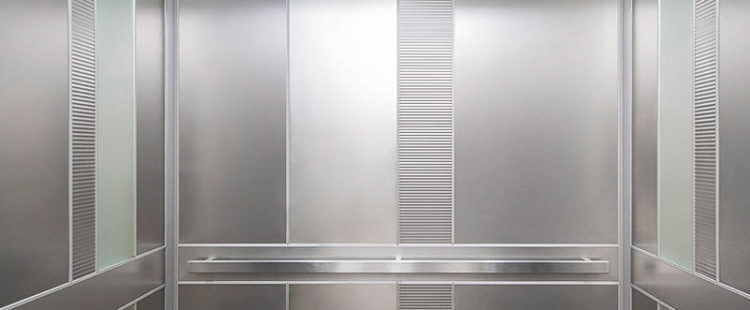Disclosure: I may earn affiliate revenue or commissions if you purchase products from links on my website. The prospect of compensation does not influence what I write about or how my posts are structured. The vast majority of articles on my website do not contain any affiliate links.
I’ve started writing this as I wait for my morning lift at the Willis Tower in Chicago. I’m the first one in the waiting area–ahead of the 7:55 wave of train people–and I pressed the touch screen indicating I wanted to go to the 33rd floor. It’s the only floor one can ascend to from this bank. The touch screen directs me to shaft N8. I take a few steps in the direction of N8, leaving quite a large courtesy space. I started working in this building a year ago. Around that time, some of the Blackstone Group’s $500 million renovation budget began to be allocated toward elevator upgrades. Now that the first stage seems to have been completed, imagine my surprise in finding that I spend longer waiting for elevators and more time traveling on them, too.
The other day, there was an interview-article featuring the Chief Digital Officer of Otis Elevator in the Wall Street Journal. I found my rage boiling over as I read it.
WSJ: Does your latest tech understand more about riders to be able to automate elevator traffic dispatching?
MR. GREEN: We’ve got some algorithms. . .
In the field of Computer Science, one popular topic used to help students grasp logical methods of problem-solving is called the elevator algorithm problem. It’s useful because a layman doesn’t need to know how to program to think critically about how to dispatch elevators. You must optimize between travel time, wait time, response to multiple inputs/direction changes, and average capacity/usage. It’s fun. And I’d expect that anybody who works for one of the world’s leading elevator manufacturers is predisposed to pondering such optimization problems.
So, why has my experience in the Willis Tower elevators gotten worse? In the corporate world of bottom lines and stockholders and red ink and black ink, it turns out that “smart” doesn’t mean “better for the end-user.” It means that the purchaser of the system and the maintainer of the system make more money, usually at the expense of guys like me who are just wanting to get to work.
In a May 2018 report about the elevators, the Chicago Tribune painted a rosy picture:
Utilizing smart technology and energy-efficient components, the upgraded system is expected to reduce trip times by as much as 30 percent and reduce energy use by about 35 percent, Equity Office and Otis said in a news release. Machine rooms, motors, cables and controls will be replaced in the renovation, which will be conducted in stages.
If you read between the lines in this single paragraph that attempts to quantify the benefits, it’s not clear what the user gets out of the bargain. 30% faster trip times sounds awesome but my longest trip of the day is between the ground and 33rd floor where I transfer again. As I said before, this is a straight shot, so how the system handles dispatch requests after it’s moving is inconsequential to my trip time. The length of the first segment has actually increased. On average, it takes longer for the trip to start because if the doors haven’t completely closed by the time someone requests the elevator again, they’ll slide right open. The time spent in motion hasn’t changed. It takes a little longer to get off the elevator because, after the smart features were implemented, the doors take longer to open after we’ve seemingly arrived on the 33rd floor. Also, there’s always more people packed in, so it’s harder to physically move out of the elevator (especially if there are chivalrous misunderstandings amongst the middle-aged folk).
What about for the second part of my trip up to the office? Since users can request a myriad of floors (15?), the “smart” technology might work better here. Unfortunately, I haven’t noticed a difference.
The real benefit of smart elevator technology is energy savings, not commute expediency. Where the previous elevators seemed to, by default, return to the ground floor during the morning rush, the smart ones seem to stay put on the 33rd floor until they get requested back down. The only logical explanation is that this saves the building a lot of money by forcing more people to pack into artificially scarce elevator space. Might the dispatching system smarten up to this as an increasing number of workers request the 33rd floor during a short span of time? Keep dreaming.
It seems that if you spam-click the request button, after roughly 10 touches, an additional elevator will be dispatched. But the system appears to be incapable of handling oscillations in crowd volume. This is worrisome because, even if a few extra touches did alert the elevators’ central nervous system to where the critical mass of people was, it’s highly unlikely that, in any assemblage of office-workers, more than a few people are going to touch the dispatch panels in the waiting area. Plus, you’ll be less likely to do this in the future if you request an elevator and get assigned to the same shaft that everyone is already waiting at.
I understand this is still an early stage of the elevator evolution, but the product is on par with what you’d expect from one of those smart HVAC systems that every one of my apartments has seemed to have. The results are disappointing as it’s clear the only realized benefit is energy savings at the cost of people’s time and comfort.
If I’m going to be forced to call something smart, by definition it can’t be stupid. In Computer Science we have the pervasive exercise of elevator algorithms. I would expect Otis to be better at designing and implementing them. They seemed to have replaced the circa-1974 system with something not just stupid, but primitive and inconvenient. When it comes to elevator tech, maybe there is something to be said about the good ol’ days.
The doors slide open as I glance up from my phone. The lanyard set violates the courtesy space and pours into the carriage. I’ll wait for the next one. As the jaws begin to close, a newcomer hastily taps the smart keypad. The doors of the capsule retract as blast-off has been delayed. If only I had something to listen to.




